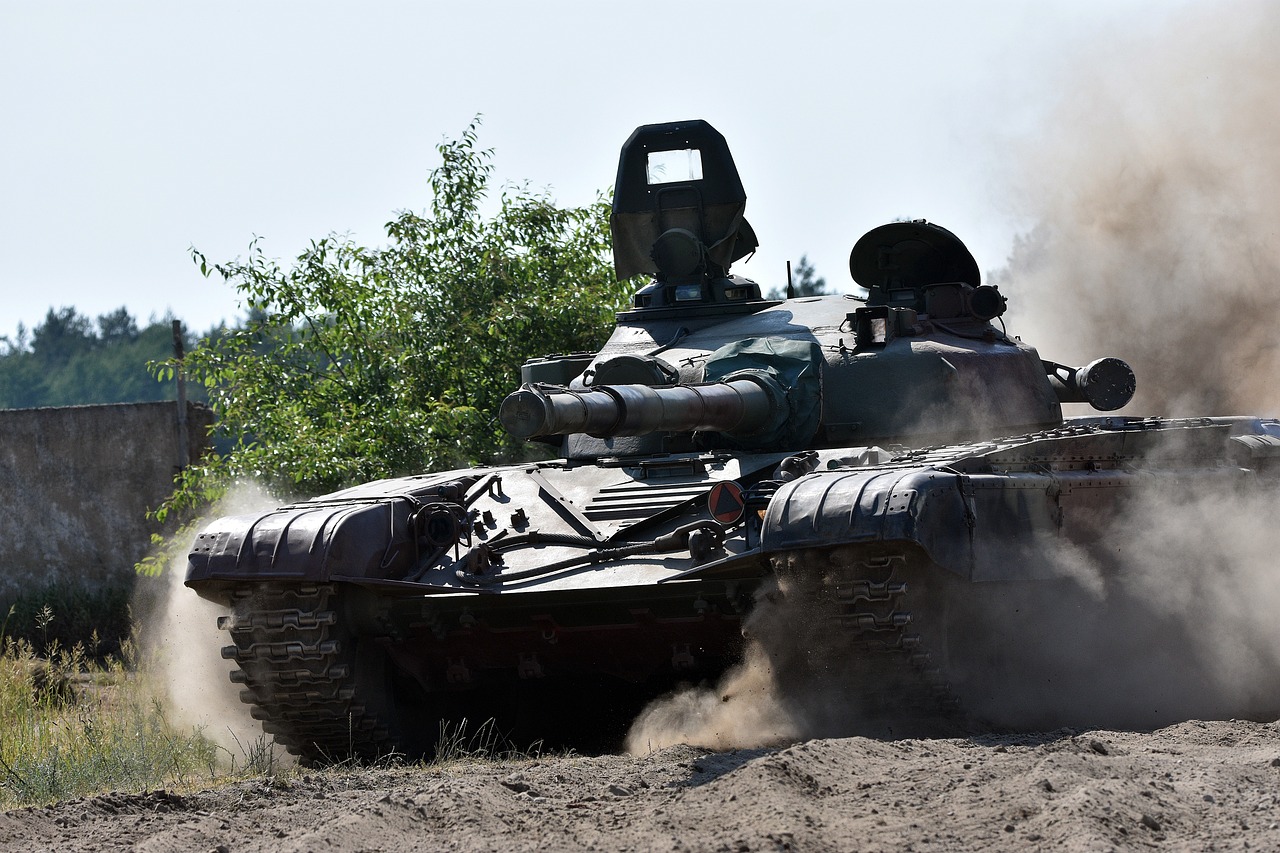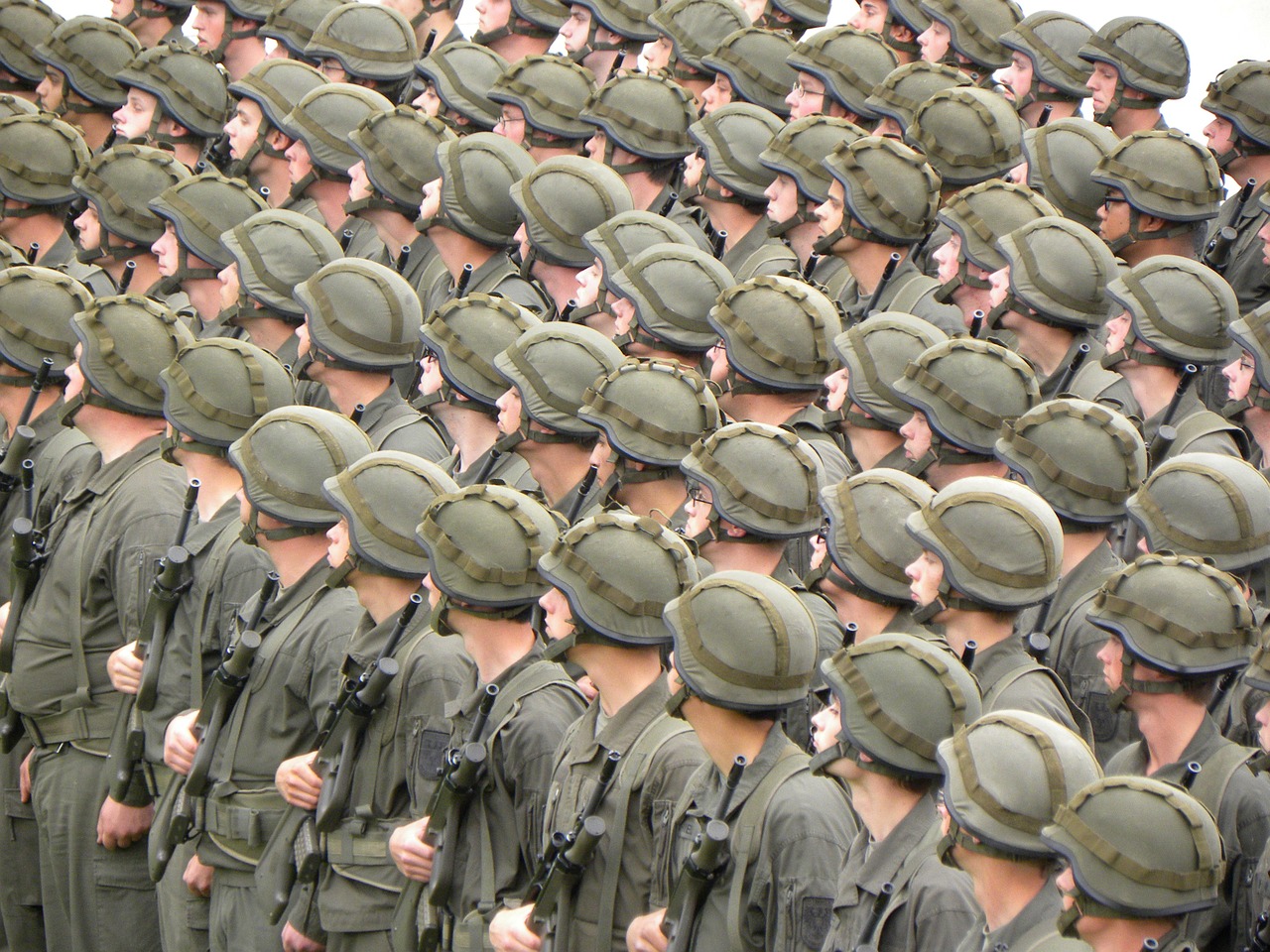The Future of Integrated Defense Systems in Joint Operations
The landscape of military operations is undergoing a significant transformation. As we delve into the future of integrated defense systems, it becomes clear that these systems are not just a technological upgrade; they represent a fundamental shift in how military forces collaborate and operate together. Imagine a world where every branch of the military—from the Army to the Navy, and the Air Force—works in perfect harmony, sharing information in real-time and making decisions that are not only informed but also instantaneous. This is the vision for joint operations that integrated defense systems aim to achieve.
At the heart of this evolution is the need for enhanced communication and collaboration. With the rise of global threats—ranging from cyber warfare to traditional military confrontations—the ability to respond swiftly and effectively has never been more critical. Integrated defense systems are designed to bridge the gaps between various military entities, ensuring that every unit is on the same page, ready to act as one cohesive force. This synergy is not merely beneficial; it is essential for maintaining national security in an increasingly complex world.
Furthermore, the integration of advanced technologies plays a pivotal role in shaping the future of defense operations. Think of it as a high-tech orchestra, where each instrument (or military branch) contributes to a harmonious performance. Technologies such as artificial intelligence, big data analytics, and cloud computing are all part of the ensemble, enhancing the capabilities of integrated defense systems. These technologies enable real-time data sharing and improve situational awareness, allowing commanders to make informed decisions based on the most current information available.
As we look to the future, it's vital to recognize that the evolution of integrated defense systems is not a solitary endeavor. It requires a concerted effort among nations, branches, and even private sectors. The collaboration extends beyond borders, as global defense partnerships become increasingly important. Countries are realizing that by working together, they can pool resources, share intelligence, and develop joint strategies that enhance their collective security posture. This interconnectedness is what will define the future of military operations.
In summary, the future of integrated defense systems in joint operations is bright, filled with potential and promise. As technology continues to advance and military strategies evolve, the ability to integrate and collaborate effectively will be the cornerstone of successful defense operations. The journey may be challenging, but the rewards—greater security, enhanced operational effectiveness, and a unified military force—are well worth the effort.
- What are integrated defense systems? Integrated defense systems refer to a framework that allows different military branches to work together seamlessly, sharing information and resources to enhance operational effectiveness.
- Why are joint operations important? Joint operations are crucial because they enable military forces to combine their strengths, ensuring a more coordinated and effective response to threats.
- How does technology impact integrated defense systems? Technology enhances integrated defense systems by improving communication, data sharing, and decision-making processes, allowing for real-time responses to evolving threats.
- What role do global partnerships play in defense integration? Global partnerships facilitate collaboration among nations, allowing them to share intelligence and resources, which strengthens overall defense capabilities.

The Role of Technology in Integrated Defense
In today's rapidly changing military landscape, technological advancements are not just a luxury; they are a necessity. Integrated defense systems are increasingly reliant on cutting-edge technologies that enable real-time data sharing and enhance decision-making processes. Imagine a battlefield where different military branches can communicate seamlessly, sharing crucial information at lightning speed. This is not just a dream—it's becoming a reality.
One of the most significant contributions of technology to integrated defense is the ability to collect and analyze vast amounts of data. With the advent of big data analytics and cloud computing, military operations can now leverage data from multiple sources, including satellites, drones, and ground units. This integration allows commanders to have a comprehensive view of the battlefield, enabling them to make informed decisions quickly. For instance, if a drone detects enemy movement, that information can be shared instantly with ground troops, who can then respond more effectively.
Moreover, the implementation of Internet of Things (IoT) devices in military operations has revolutionized the way forces operate. Sensors embedded in equipment and vehicles can monitor their status in real-time, providing essential feedback to maintenance crews and operational commanders. This proactive approach not only enhances the efficiency of military assets but also significantly reduces downtime, ensuring that forces are always ready to respond.
However, with these advancements come challenges, particularly in the realm of cybersecurity. As military systems become more interconnected, the risk of cyberattacks increases. Protecting sensitive information from potential breaches is paramount. Defense organizations must invest in robust cybersecurity measures to safeguard their integrated systems. This includes employing advanced encryption techniques and conducting regular security audits to identify vulnerabilities.
Furthermore, the role of technology extends beyond mere communication and data sharing. The integration of artificial intelligence (AI) is also making waves in the defense sector. AI can analyze data faster than any human could, identifying patterns and predicting potential threats. For example, AI algorithms can sift through satellite imagery to detect unusual activity, alerting military personnel before a situation escalates. This predictive capability allows for a more proactive defense strategy, ultimately enhancing operational effectiveness.
In summary, the role of technology in integrated defense systems is pivotal. It not only enhances communication and data sharing but also improves operational readiness and decision-making. As we look to the future, it is clear that embracing and adapting to these technological advancements will be crucial for military forces aiming to maintain a competitive edge. The integration of these technologies is not merely an upgrade; it is a fundamental shift in how defense operations are conducted.
- What is integrated defense?
Integrated defense refers to the coordinated efforts of various military branches to operate as a unified force, utilizing shared information and resources. - How does technology improve joint military operations?
Technology enhances joint operations by enabling real-time data sharing, improving communication, and providing advanced analytical tools for decision-making. - What are the cybersecurity challenges in integrated defense?
As military systems become more interconnected, they are increasingly vulnerable to cyberattacks, necessitating robust cybersecurity measures to protect sensitive information.

Strategic Collaboration Among Forces
In the realm of modern warfare, strategic collaboration among military forces is not just beneficial; it’s absolutely essential. As threats become more complex and multifaceted, the need for various branches of the military to work together seamlessly has never been more pronounced. Imagine a symphony orchestra where each musician plays a different instrument, yet they all must harmonize to create a beautiful piece of music. This is akin to how different military branches must collaborate to achieve operational success. By fostering inter-service cooperation, we can enhance overall effectiveness and ensure that our forces are ready to respond to any challenge that arises.
Effective collaboration requires more than just a desire to work together; it necessitates a well-thought-out strategy. One of the key components of this strategy is establishing clear communication channels. When the Army, Navy, Air Force, and other entities can share information in real-time, they can make informed decisions quickly. This is where technology plays a pivotal role, allowing for the integration of systems that can relay crucial data across platforms. For instance, a naval ship can share intelligence with an Air Force unit, enabling a coordinated response to a threat. The ability to communicate effectively can mean the difference between victory and defeat.
Moreover, regular joint training exercises serve as a cornerstone for building familiarity and trust among different military units. These exercises are not merely procedural; they are vital in preparing forces for integrated operations. Think of these exercises as a rehearsal before the big performance. Each branch must understand the capabilities and limitations of the others to function cohesively in the field. During these training sessions, personnel learn to synchronize their operations, which significantly enhances their readiness for real-world scenarios. The more they practice together, the more instinctive their collaboration becomes.
Joint training exercises can take many forms, from large-scale drills to smaller, focused sessions. The goal is to create a realistic environment where forces can engage in tactical operations together. For example, a recent exercise involved the Army coordinating with the Navy to simulate a coastal defense scenario. This not only improved their tactical skills but also fostered a sense of camaraderie and understanding among the troops. The lessons learned during these exercises are invaluable and can be applied directly to future operations.
Incorporating simulation technologies into these exercises has revolutionized how training is conducted. With advanced simulation tools, military personnel can engage in realistic scenarios that mimic real-world conditions. This controlled environment allows them to hone their skills without the risks associated with live exercises. Imagine a pilot flying a virtual mission where they face unexpected challenges, such as enemy fire or mechanical failures. This kind of training prepares them for the unpredictability of actual combat, ensuring they are ready when it counts.
Implementing effective feedback mechanisms after joint exercises is crucial for continuous improvement. The insights gained from these debriefings can refine strategies and enhance performance in integrated defense systems. For instance, after a joint exercise, participants may discuss what went well and what didn’t, allowing them to identify gaps in communication or operational procedures. This iterative process ensures that each exercise builds upon the last, leading to a more capable and cohesive force.
In conclusion, strategic collaboration among military forces is a multifaceted endeavor that requires commitment, clear communication, and continuous training. The synergy created through joint operations not only enhances operational effectiveness but also fosters a culture of teamwork and mutual respect. As we look toward the future, investing in these collaborative strategies will be paramount in ensuring that our defense forces are prepared to meet any challenge head-on.
- What are joint training exercises?
Joint training exercises are coordinated drills involving multiple military branches to enhance their ability to work together effectively in real-world scenarios. - How does technology aid in military collaboration?
Technology facilitates real-time communication and data sharing, allowing different branches to make informed decisions quickly during joint operations. - Why is feedback important after exercises?
Feedback helps identify strengths and weaknesses in operations, allowing for continuous improvement and refinement of strategies for future missions.

Joint Training Exercises
Joint training exercises are the backbone of effective military collaboration. They serve as a vital platform for different branches of the armed forces to come together, practice, and perfect their operations in a unified manner. Imagine a symphony orchestra where each musician plays a different instrument; without regular rehearsals, the music would be chaotic and disjointed. Similarly, military units must engage in joint training to ensure that their actions are harmonious during real-world operations.
These exercises are not just about physical drills; they encompass a wide array of scenarios that mimic the complexities of actual combat situations. By participating in joint training, forces can develop a shared understanding of tactics, techniques, and procedures. This shared knowledge is crucial because, in the heat of battle, every second counts. The ability to anticipate each other’s moves can mean the difference between success and failure.
Moreover, joint training exercises foster trust and communication among diverse military units. When soldiers from different branches work side by side, they build relationships that transcend their individual identities. This camaraderie is essential, as it enhances operational effectiveness and ensures that all parties are on the same page when it matters most. In fact, studies have shown that units that regularly engage in joint training have higher success rates in joint operations.
To maximize the benefits of joint training exercises, several key elements should be considered:
- Realistic Scenarios: Training should reflect the challenges faced in real-world operations, including urban warfare, cyber threats, and asymmetric warfare.
- Interoperability: Exercises should focus on improving the ability of different military branches to work together seamlessly, utilizing common communication systems and protocols.
- Feedback and Evaluation: After each exercise, it’s crucial to conduct thorough debriefs to identify strengths and weaknesses, allowing for continuous improvement.
In addition, the integration of advanced technologies, such as simulation and virtual reality, can further enhance the effectiveness of joint training exercises. These technologies allow military personnel to engage in complex scenarios without the risks associated with live training. For instance, simulation tools can recreate battlefield conditions, enabling troops to practice their responses to various threats in a safe environment.
Ultimately, the essence of joint training exercises lies in their ability to prepare military forces for the unpredictable nature of modern warfare. By investing time and resources into these collaborative efforts, defense entities can ensure that they are ready to face any challenge that comes their way. As we look to the future, the importance of joint training exercises will only grow, making them a critical component of integrated defense systems.
1. What are joint training exercises?
Joint training exercises are collaborative training sessions involving multiple branches of the military, designed to enhance interoperability and operational effectiveness.
2. Why are joint training exercises important?
They are crucial for building trust, improving communication, and ensuring that different military units can work together effectively during real-world operations.
3. How often should joint training exercises be conducted?
The frequency can vary, but regular exercises are recommended to maintain readiness and adaptability to evolving threats.
4. What role does technology play in joint training?
Advanced technologies, such as simulations and virtual reality, are increasingly used to create realistic training environments, allowing forces to prepare for complex scenarios safely.

Simulation Technologies
In today's rapidly evolving military landscape, have emerged as a game-changer, revolutionizing the way armed forces prepare for integrated operations. Imagine being able to recreate complex battlefield scenarios without the risks associated with live exercises. That's precisely what simulation technologies offer. They provide a safe and controlled environment where military personnel can hone their skills, test strategies, and build teamwork without the fear of real-world consequences.
These technologies encompass a wide range of tools, from virtual reality (VR) to advanced computer simulations that mimic real-world conditions. By immersing soldiers in realistic environments, they can practice their responses to various situations, ranging from urban warfare to aerial combat. This level of preparation not only increases individual confidence but also enhances unit cohesion as everyone learns to work together seamlessly.
Furthermore, simulation technologies allow for the integration of multiple branches of the military, fostering a deeper understanding of joint operations. For instance, a simulation involving the Army, Navy, and Air Force can help each branch understand its role in a larger mission. This understanding is crucial, as effective communication and collaboration are vital in the heat of battle. The ability to run these simulations repeatedly means that forces can continually refine their tactics and strategies.
One of the most exciting aspects of simulation technologies is their capacity for data collection and analysis. After each training session, data can be analyzed to identify strengths and weaknesses, providing invaluable insights that can lead to improved performance in real-world scenarios. This feedback loop is essential for developing effective strategies and ensuring that all personnel are operating at their best.
As we look to the future, the integration of artificial intelligence (AI) into simulation technologies promises to take training to an entirely new level. AI can create adaptive scenarios that respond to the actions of trainees, making each exercise unique and challenging. This level of customization ensures that military personnel are always engaged and learning, which is vital for maintaining a high state of readiness.
In summary, simulation technologies are not just supplementary tools; they are integral components of modern military training programs. By providing realistic environments, fostering inter-service collaboration, and enabling data-driven improvements, these technologies are paving the way for more effective and integrated defense operations. As we continue to innovate and adapt, the role of simulation technologies will only become more critical in preparing our forces for the challenges ahead.
- What are simulation technologies? Simulation technologies are tools that recreate real-world scenarios for training purposes, allowing military personnel to practice and refine their skills in a controlled environment.
- How do simulation technologies benefit joint operations? They enhance understanding and cooperation among different military branches, allowing forces to practice working together effectively before real-world missions.
- Can simulation technologies incorporate artificial intelligence? Yes, AI can be integrated into simulation technologies to create adaptive training scenarios that respond to the actions of trainees, providing a more engaging experience.
- What is the importance of data collection in simulation training? Data collected during simulations can be analyzed to identify areas for improvement, helping to refine strategies and enhance performance in real-world operations.

Feedback Mechanisms
Implementing effective after joint training exercises is crucial for refining strategies and enhancing performance in integrated defense systems. Think of feedback as the compass that guides military units through the complex terrain of joint operations. Without it, forces may find themselves lost, unable to adapt to the ever-changing landscape of modern warfare.
One of the primary goals of feedback mechanisms is to create a culture of continuous improvement. After each exercise, it’s essential for commanders and participants to gather insights on what worked well and what didn’t. This process can involve structured debriefings where personnel discuss their experiences and outcomes. By encouraging open dialogue, military units can identify strengths and weaknesses in their operational tactics.
Additionally, employing technology can significantly enhance the feedback process. For instance, data analytics tools can be used to analyze performance metrics from training exercises, providing a detailed overview of how different units performed under various conditions. This analytical approach allows for a more objective assessment, helping to pinpoint specific areas that need improvement.
Moreover, establishing a structured feedback loop is essential. This loop typically consists of the following steps:
- Observation: Collect data during the exercise.
- Analysis: Evaluate the collected data to identify patterns.
- Feedback Session: Conduct meetings to discuss findings.
- Implementation: Apply lessons learned to future operations.
To further illustrate the effectiveness of feedback mechanisms, consider the following table that outlines the benefits of structured feedback in joint operations:
| Benefit | Description |
|---|---|
| Enhanced Communication | Fosters better understanding among units, leading to improved coordination. |
| Increased Adaptability | Allows forces to quickly adapt strategies based on real-time feedback. |
| Improved Morale | Encourages a sense of ownership and accountability among personnel. |
| Data-Driven Decisions | Utilizes analytics for informed decision-making, reducing reliance on intuition alone. |
In conclusion, effective feedback mechanisms are not just an afterthought; they are a vital component of successful integrated defense systems. By embracing a culture of feedback, military forces can ensure that they are always learning, evolving, and ready to face the challenges of tomorrow's battlefield.
Q: Why are feedback mechanisms important in joint operations?
A: Feedback mechanisms are crucial as they help identify strengths and weaknesses in operational tactics, fostering continuous improvement and adaptability.
Q: How can technology aid in the feedback process?
A: Technology, such as data analytics tools, can provide objective performance metrics, allowing for a more thorough evaluation of training exercises.
Q: What steps are involved in a structured feedback loop?
A: The feedback loop typically involves observation, analysis, feedback sessions, and implementation of lessons learned.
Q: What are some benefits of structured feedback?
A: Benefits include enhanced communication, increased adaptability, improved morale, and data-driven decision-making.

Data Integration and Cybersecurity
As military operations become increasingly reliant on technology, the importance of data integration and cybersecurity cannot be overstated. The seamless flow of information between different branches of the military is crucial for effective decision-making and operational success. However, this reliance also exposes defense systems to a myriad of cybersecurity threats that can compromise sensitive information and disrupt joint operations. Imagine a well-coordinated orchestra where each musician plays their part perfectly; now, consider what happens if one musician goes off-key due to a communication breakdown. This analogy illustrates the potential chaos that can ensue without robust data integration and cybersecurity measures in place.
To effectively manage the challenges of data integration, military organizations must adopt a multi-layered approach. This involves not just the implementation of advanced technologies but also the establishment of strict protocols and guidelines. For example, utilizing cloud-based systems can facilitate real-time data sharing, but these systems must be fortified with encryption and access controls to protect against unauthorized access. Moreover, regular security audits and updates are essential to ensure that defenses remain strong against evolving cyber threats.
Moreover, the integration of data across various platforms poses its own set of challenges. Different branches of the military often utilize disparate systems that may not communicate effectively with one another. This lack of interoperability can lead to delays in critical operations. To address this, military leaders must prioritize the development of standardized protocols and interfaces that allow for seamless data exchange. For instance, implementing Application Programming Interfaces (APIs) can facilitate communication between different software systems, ensuring that all units are on the same page during joint operations.
In addition to these technical solutions, fostering a culture of cybersecurity awareness among personnel is vital. Training programs should emphasize the importance of safeguarding information and recognizing potential threats. Regular drills and simulations can help personnel practice their responses to cyber incidents, thus enhancing overall readiness. Just as soldiers train for physical combat, they must also be prepared for the invisible battles that occur in cyberspace.
To further illustrate the importance of data integration and cybersecurity, consider the following table that outlines key challenges and solutions:
| Challenge | Solution |
|---|---|
| Data silos between branches | Implement standardized communication protocols |
| Cybersecurity threats | Regular security audits and personnel training |
| Unauthorized access to sensitive data | Use encryption and access controls |
In conclusion, the integration of data and the protection of that data through cybersecurity measures are paramount for the success of joint military operations. As the landscape of warfare evolves, so too must the strategies and technologies employed to safeguard our forces. By prioritizing these aspects, military organizations can enhance their operational effectiveness and maintain an edge in an increasingly complex security environment.

Future Trends in Defense Integration
As we stand on the brink of a new era in military operations, are emerging that promise to reshape how joint forces operate. With the rapid evolution of technology and the increasing complexity of global threats, military strategists are rethinking traditional approaches to defense. One of the most significant trends is the growing reliance on artificial intelligence (AI). Imagine a world where AI systems can analyze vast amounts of battlefield data in real-time, offering commanders actionable insights and predictive analytics that can make the difference between victory and defeat. This capability not only enhances decision-making but also streamlines resource allocation across various branches of the military.
Another important trend is the expansion of global defense partnerships. In a landscape where threats are not confined by borders, countries are realizing that collaboration is key to addressing complex security challenges. These partnerships facilitate the sharing of intelligence, resources, and technology, creating a more unified front against common adversaries. For instance, joint operations between NATO allies have demonstrated the effectiveness of integrated defense systems, showcasing how a combined effort can lead to greater operational success. The potential for these partnerships is vast, as nations can leverage each other's strengths and capabilities to enhance their collective defense posture.
Moreover, the integration of cyber capabilities into defense strategies is becoming increasingly vital. As military operations become more reliant on digital platforms, the risk of cyber threats escalates. This necessitates a robust approach to cybersecurity that not only protects sensitive information but also ensures the integrity of operational systems. Future defense integration will likely involve developing advanced cybersecurity protocols and training personnel to recognize and respond to cyber threats effectively. By prioritizing cybersecurity, military forces can safeguard their operations and maintain a strategic advantage over adversaries.
Furthermore, the use of simulation technologies in training exercises is set to revolutionize how military personnel prepare for integrated operations. These technologies allow for realistic training scenarios that mimic real-world challenges, enabling forces to hone their skills in a controlled environment. As the complexity of warfare increases, so does the need for effective training solutions that can keep pace with technological advancements. With simulation technologies, military units can practice coordination and communication, which are critical for successful joint operations.
In summary, the future of defense integration will be characterized by a blend of cutting-edge technology, strategic partnerships, and a commitment to cybersecurity. As military forces adapt to the changing landscape of global threats, they will need to embrace these trends to enhance their operational effectiveness. The question remains: are we ready to leverage these innovations to create a more secure world?
- What is the role of AI in future defense integration?
AI will enhance decision-making processes by analyzing data quickly and accurately, allowing military leaders to make informed choices in real-time. - How do global partnerships improve defense capabilities?
Global partnerships enable nations to share resources, intelligence, and technology, leading to a stronger collective defense against threats. - Why is cybersecurity important in defense integration?
As military operations increasingly rely on digital systems, protecting sensitive information and ensuring system integrity is crucial for operational success. - What are simulation technologies and their benefits?
Simulation technologies provide realistic training scenarios that prepare military personnel for real-world challenges, improving their skills and coordination.

Artificial Intelligence in Defense
Artificial Intelligence (AI) is no longer just a concept from science fiction; it is actively reshaping the landscape of integrated defense systems. Imagine a world where machines can analyze vast amounts of data in the blink of an eye, making decisions that enhance operational efficiency and effectiveness. This is not a distant future; it's happening now. AI technologies are enabling military forces to process information faster and more accurately than ever before, leading to better strategic decisions in joint operations.
One of the most significant advantages of AI in defense is its ability to improve situational awareness. With the integration of AI algorithms, military units can gather and analyze data from various sources—satellites, drones, and ground sensors—to create a comprehensive picture of the battlefield. This real-time data analysis allows commanders to make informed decisions quickly, which is crucial in high-stakes environments. For instance, AI can predict potential threats by analyzing patterns in enemy movements, thereby allowing forces to prepare and respond proactively.
Moreover, AI can enhance logistics and supply chain management. By automating inventory tracking and predicting supply needs, military forces can ensure that troops receive the necessary resources without delays. This efficiency not only saves time but also reduces costs, allowing defense budgets to be allocated more effectively. In a recent study, it was found that AI-driven logistics systems could reduce operational costs by up to 30% while improving delivery times.
However, the integration of AI into defense systems is not without its challenges. Concerns about cybersecurity and the ethical implications of autonomous decision-making are at the forefront of discussions among military leaders and policymakers. Protecting sensitive data from cyber threats is paramount, especially when AI systems are involved. As military operations become increasingly reliant on interconnected technologies, the risk of cyber attacks grows. Therefore, investing in robust cybersecurity measures is essential to safeguard these advanced systems.
Furthermore, the ethical implications of using AI in warfare cannot be overlooked. As machines take on more decision-making roles, questions arise about accountability and the potential for unintended consequences. For example, if an AI system mistakenly identifies a civilian target as a threat, the ramifications could be catastrophic. To address these concerns, many defense organizations are developing ethical guidelines and oversight mechanisms to ensure that AI applications adhere to international humanitarian laws.
In conclusion, the integration of artificial intelligence in defense is a game-changer that holds tremendous potential for enhancing joint military operations. From improving situational awareness to optimizing logistics, AI is paving the way for more effective and efficient defense strategies. However, as we embrace these technologies, it is crucial to address the accompanying challenges, particularly in cybersecurity and ethics, to ensure that AI serves as a force for good in global defense.
- What is the role of AI in military operations? AI enhances decision-making, improves situational awareness, and optimizes logistics in military operations.
- Are there ethical concerns regarding AI in defense? Yes, there are concerns about accountability and the potential for unintended consequences in warfare.
- How can cybersecurity be ensured with AI systems? Investing in robust cybersecurity measures and developing ethical guidelines are essential to protect AI systems from cyber threats.
- What are the benefits of AI in logistics? AI can automate inventory tracking and predict supply needs, leading to reduced operational costs and improved delivery times.

Global Defense Partnerships
In today's interconnected world, have become more crucial than ever. As security threats evolve and become increasingly complex, nations are recognizing that collaboration is not just beneficial; it is essential for effective defense strategies. These partnerships allow countries to share intelligence, resources, and technology, enhancing their collective ability to respond to crises. Imagine a team of superheroes, each with unique powers, coming together to tackle a formidable villain. That's the essence of global defense partnerships—bringing together diverse strengths to create a more robust defense mechanism.
One of the key benefits of these partnerships is the pooling of resources. Countries can leverage each other's military assets, training programs, and technological advancements. For instance, consider a scenario where a small nation lacks advanced surveillance technology. By partnering with a more technologically advanced ally, they can gain access to critical data that enhances their situational awareness. This not only boosts their defensive capabilities but also fosters a sense of unity among allied nations.
Moreover, joint military exercises are a cornerstone of these partnerships. They provide a platform for forces from different countries to train together, fostering trust and understanding. During these exercises, participants can experience firsthand the operational procedures and communication protocols of their partners. This familiarity is vital when the stakes are high, such as during a real-world crisis. The more integrated these forces become through training, the more seamless their collaboration will be in actual operations.
Another significant aspect of global defense partnerships is the sharing of intelligence and information. In an age where data is a powerful currency, the ability to exchange critical information can mean the difference between thwarting a threat and facing dire consequences. For example, intelligence-sharing agreements can lead to early warnings about potential attacks, allowing nations to take preventive measures. This collaborative approach not only strengthens individual nations but also contributes to global security.
However, establishing and maintaining these partnerships is not without its challenges. Differences in military culture, operational procedures, and political agendas can create friction. To overcome these hurdles, nations must prioritize open communication and mutual respect. Regular meetings and collaborative planning sessions can help bridge gaps and foster a spirit of cooperation. It’s like building a bridge—each side must work together to ensure that the structure is strong and reliable.
As we look to the future, the role of global defense partnerships will only grow. With emerging threats such as cyber warfare, terrorism, and geopolitical tensions, nations will need to unite more than ever. By embracing collaboration, countries can enhance their operational effectiveness and ensure a safer world for all.
- What are global defense partnerships? Global defense partnerships are collaborations between nations to enhance security through shared resources, intelligence, and joint military operations.
- Why are these partnerships important? They allow countries to pool resources, share intelligence, and conduct joint training exercises, improving their collective defense capabilities.
- What challenges do these partnerships face? Differences in military culture, operational procedures, and political agendas can create challenges, but open communication can help overcome these issues.
- How do joint military exercises benefit global defense partnerships? They promote trust and understanding among forces, ensuring smoother cooperation during real-world operations.
Frequently Asked Questions
- What are integrated defense systems?
Integrated defense systems refer to a comprehensive approach that combines various military technologies and strategies to enhance joint operations. These systems allow different branches of the military to work together seamlessly, sharing information and resources to respond effectively to threats.
- How does technology impact integrated defense systems?
Technology plays a crucial role in integrated defense systems by enabling real-time data sharing and improving decision-making processes. With advancements in communication and information technology, military units can coordinate their actions more effectively, leading to better operational outcomes.
- What is the importance of joint training exercises?
Joint training exercises are essential for building trust and familiarity among different military units. These exercises simulate real-world scenarios, allowing personnel to practice their skills and improve collaboration before facing actual threats in the field.
- How do simulation technologies enhance training?
Simulation technologies create realistic training environments where military personnel can hone their skills without the risks associated with live exercises. By using advanced simulations, forces can prepare for various scenarios, ensuring they are ready for any situation during real operations.
- What role does cybersecurity play in integrated defense?
Cybersecurity is critical in integrated defense systems as it protects sensitive data from cyber threats. With the increasing reliance on technology, securing communication and information is vital to maintain operational integrity and prevent adversaries from gaining an advantage.
- What are some future trends in defense integration?
Future trends in defense integration include the growing use of artificial intelligence to enhance analysis and decision-making, as well as the formation of global defense partnerships. These trends aim to address evolving security challenges and improve joint operational effectiveness.
- How can artificial intelligence improve defense operations?
Artificial intelligence can significantly enhance defense operations by providing advanced data analysis and predictive capabilities. This technology helps military leaders make informed decisions quickly, adapting strategies to the dynamic nature of modern warfare.
- Why are global defense partnerships important?
Global defense partnerships are vital for addressing complex security challenges that transcend national borders. By collaborating with international allies, military forces can share resources, knowledge, and strategies, ultimately enhancing their integrated defense capabilities.



















